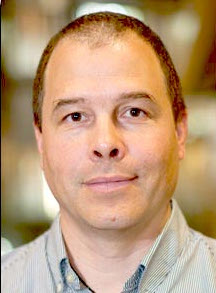Dirk König

Professional Experience
- Research Engineer, Chemnitz University of Technology (TU), Germany; 1997 – 1999
- DFG (German Research Foundation) PhD Fellow,TU Chemnitz, Germany; 2000 – 2003
- Post-Doc, Super-computer based modelling of novel gate dielectrics, TU Chemnitz and AMD Europe, Germany; 2004 – 2005
- Head of Theory and Characterization Group, Third Generation Solar Cell Dept., ARC- PV-CoE, UNSW; 2006 – 2010 [Research Fellow], 2011 – 2014 [Senior Research Fellow]
- Senior Research Fellow, Deputy Director (Research) Integrated Material Design Centre (IMDC) and Advanced Solar Cell Concepts Strand, School of Photovoltaic and Renewable Engineering (SPREE); 2015 –
Education
- Study of Control Theory, University of Hull, UK; 1993-1994
- Engineer in Solid State Electronics and Control Theory (University Diplom – Dipl. Ing(EE)), top 1st class honours, TU Chemnitz; 1997
- Rigorosum and Defense of PhD thesis, Magna Cum Laude (1st Class Honours) to Dr. rer. nat. (Ph), TU Chemnitz; 2004
Research Interests
Theory, Modelling and Characterization of novel/alternative materials for Si-based quantum structures and ULSI devices
Chemical and field effect passivation of Si surfaces practicable test structures and realistic materials for hot carrier solar cells
environmentally stable oxygen-free perovskites, iso-electronic to ABX3 Quantum physics and chemistry, solid state and semiconductor physics Concepts of practical realisation of novel structures and devices for PV and ULSI
Research Contributions
Discovered and optimized high fixed negative charge density (-5×10^12 cm-2, average over 4″ wafer) in Aluminiumfluoride (AlF3) on oxidized Si (http://dx.doi.org/10.1063/1.1886909 and references therein)
Invention of optically assisted IV characterization technique (http://dx.doi.org/10.1002/pip.2367)
Key contributions to the understanding of hot carrier solar cell materials (http://dx.doi.org/10.1016/j.solmat.2012.12.029 , http://dx.doi.org/10.1016/j.solmat.2015.05.002), physics (http://dx.doi.org/10.1016/j.physe.2009.12.032 , http://dx.doi.org/10.7567/JJAP.53.05FV04 , ) and devices (http://dx.doi.org/10.1063/1.4757979)
Key contributions on the feasibility of conventional electronic impurity doping of Si nanovolumes such as nanocrystals (http://dx.doi.org/10.1038/srep09702)
Modelling fully amino- (NH2-) terminated Si nanocrystals with DFT (http://dx.doi.org/10.1103/PhysRevB.78.035339)
Determination of intrinsic (bias-free) electron tunneling mass through SiO2 via intrinsic charge-up process (http://dx.doi.org/10.1016/j.sse.2007.03.009)
Energy shift of Si nano-volume band structure as function of embedding dielectric (SiO2 vs. Si3N4), enabling undoped CMOS-compatible ULSI devices (http://dx.doi.org/10.1002/admi.201400359)
Fundamental parameters (atoms, inter-atomic bonds, interface bonds) in analytic form for zinc blende and diamond lattice nano crystals as function of their shape, faceting and size for interpreting solid state spectroscopy data (http://dx.doi.org/10.1063/1.4960994 ; open access)
For dissemination of key results (journals, books), see
https://scholar.google.com.au/citations?user=B_1Q8CMAAAAJ&hl=en&oi=ao
http://www.researchgate.net/profile/D_Koenig2/publications
Total joint funding since 2005 ~AU-$ 28.9M, funding as chief investigator ~AU-$ 5.8M
Honours, Awards
- DFG doctoral fellowship; 2000 – 2003.
- Equipment and Material Grant of the Founder’s Society for German Science (Stifterverband der Deutschen Wissenschaft); 2002 – 2003.
- MREII awards in 2009 and 2011.
- Go8-DAAD Awards in 2012 and 2014.
- UNSW Blue Sky research award in 2014 (with Dr. Binesh Puthen-Veettil).
- UA-DAAD Award in 2016.
- 2018 Theodore-von-Kàrmàn Fellowship of RWTH Aachen University, Germany,
for pioneering work in the field of solid state physics concerning silicon-based
electronic nanostructures for next generation VLSI and ultra-low power electronics.
